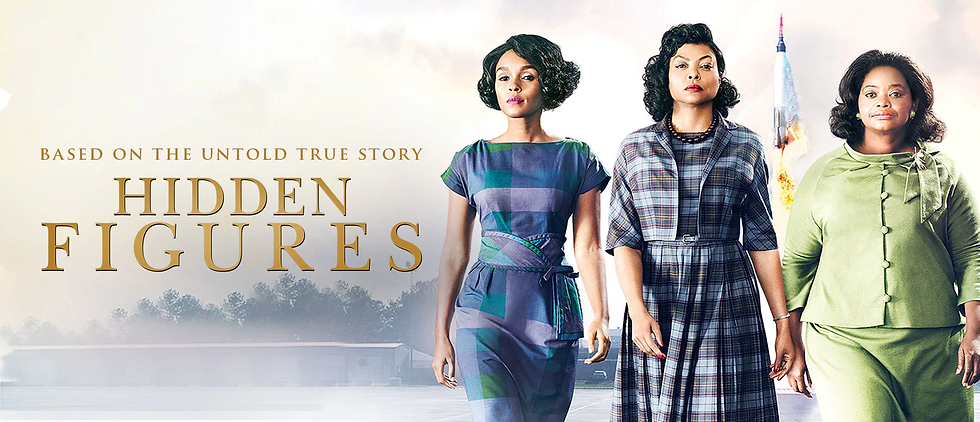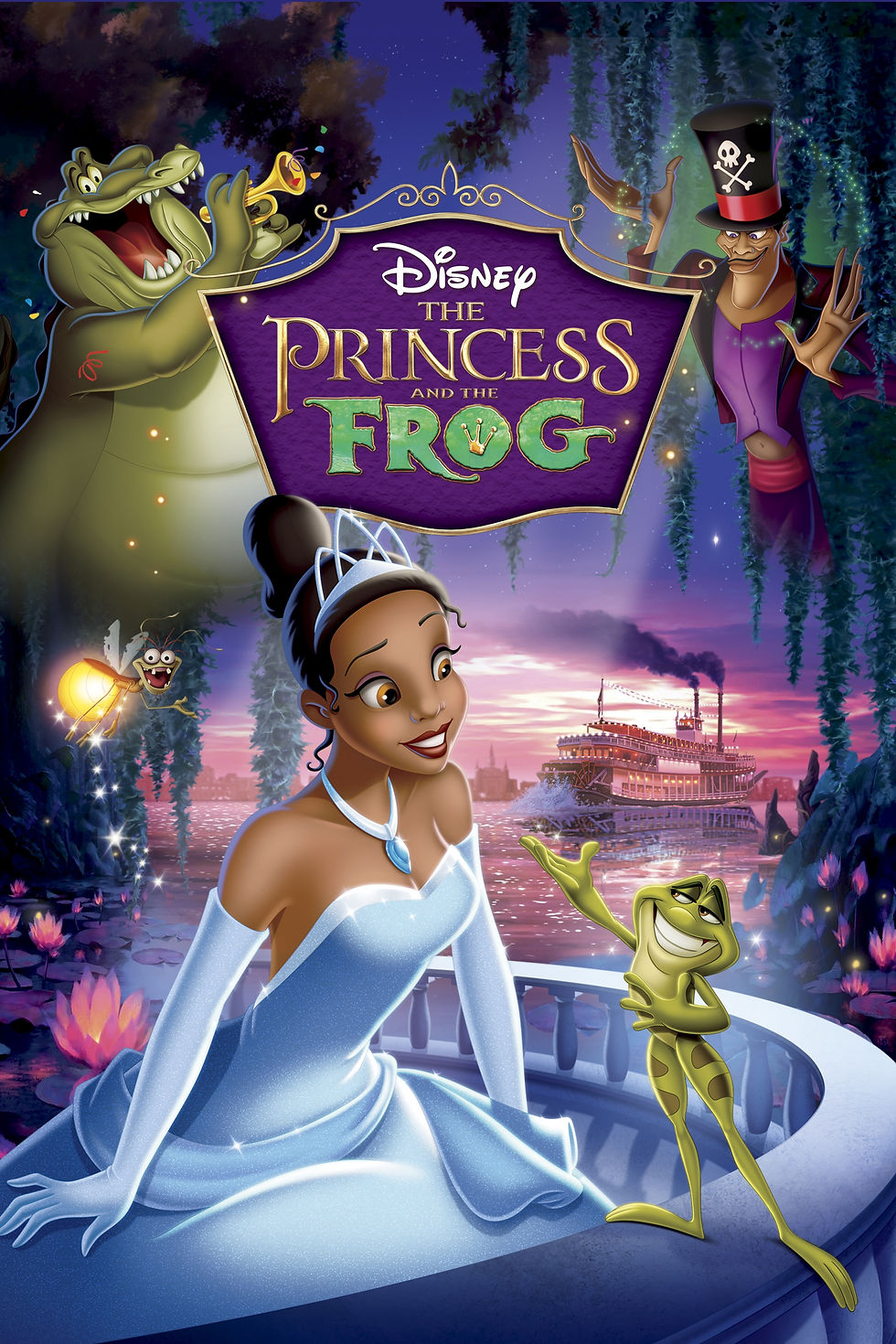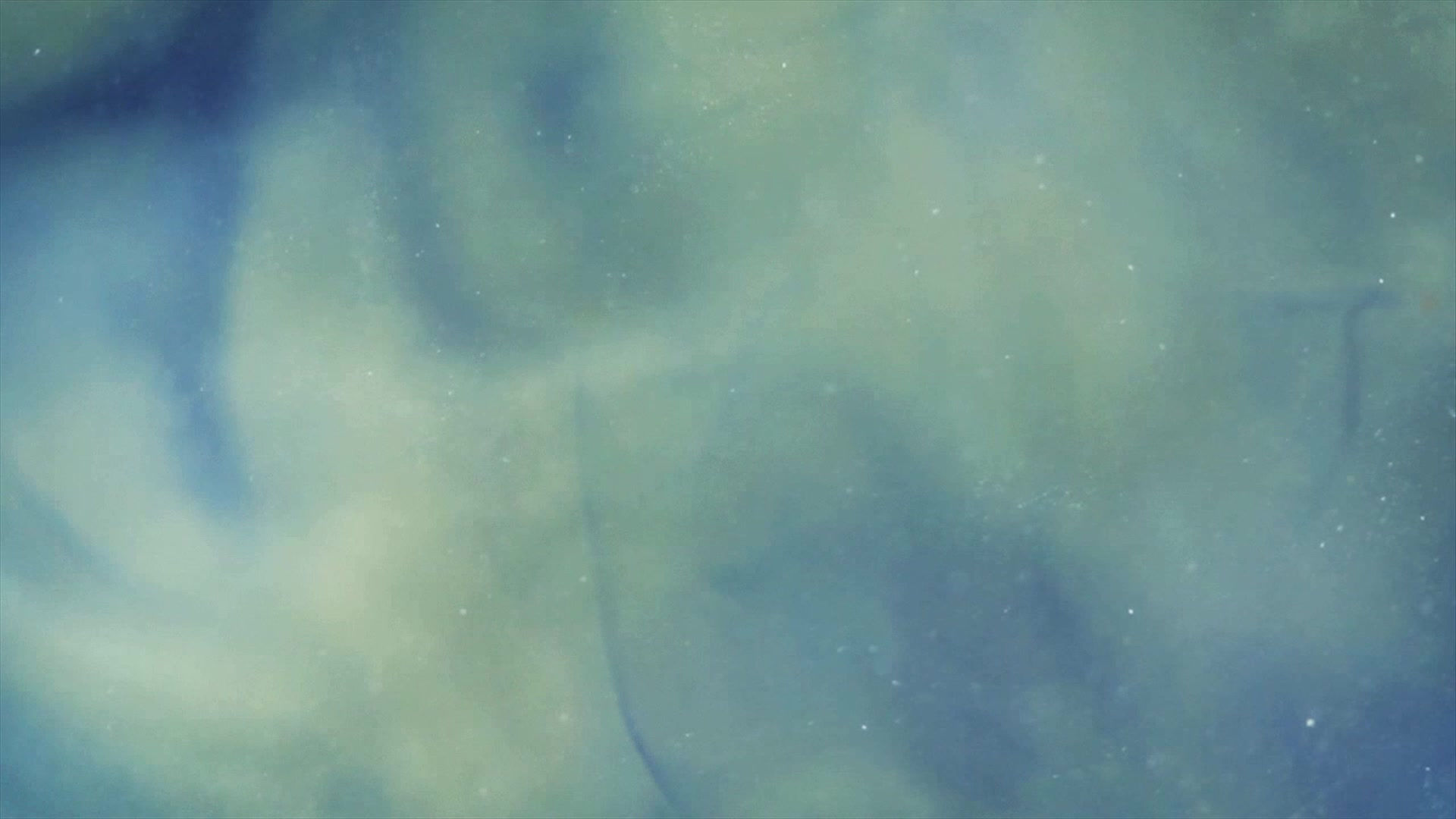#BlackLivesMatter: Representations Of Ethnicity - Have Things Changed?
- Oct 19, 2021
- 6 min read
HIDDEN FIGURES (2016)

Hidden Figures is a 2016 American biographical drama film directed by Theodore Melfi and written by Melfi and Allison Schroeder. It is loosely based on the 2016 non-fiction book of the same name by Margot Lee Shetterly about African American female mathematicians who worked at the National Aeronautics and Space Administration (NASA) during the Space Race. The film stars Taraji P. Henson as Katherine Johnson, Octavia Spencer as Dorothy Vaughan, and Janelle Monáe as Mary Jackson. Kevin Costner, Kirsten Dunst, Jim Parsons and Glen Powell featured in supporting roles.
Hidden Figures had a limited release on December 25, 2016, by 20th Century Fox, before going wide in North America on January 6, 2017. It received critical acclaim, with praise for the performances, particularly those of Henson and Spencer, the writing, direction, cinematography, emotional tone, and historical accuracy, although some argued it featured a white saviour narrative. The film was a commercial success, grossing $236 million worldwide against its $25 million production budget.
The film was chosen by National Board of Review as one of the top ten films of 2016 and received various awards and nominations, including three nominations at the 89th Academy Awards, including Best Picture. It also won the Screen Actors Guild Award for Outstanding Performance by a Cast in a Motion Picture.
The basic virtue of Hidden Figures, and it’s a formidable one, is to proclaim with a clarion vibrancy that, were it not for the devoted, unique, and indispensable efforts of three black women scientists, the United States might not have successfully sent people into space or to the moon and back. The movie is set mainly in 1961 and 1962, in Virginia, where a key NASA research centre was based, and the movie is aptly and thoroughly derisive toward the discriminatory laws and practices that prevailed at the time. The insults and indignities that black residents of Virginia, and black employees of NASA, unremittingly endured are integral to the drama. Those segregationist rules and norms—and the personal attitudes and actions that sustained them—are unfolded with a clear, forceful, analytical, and unstinting specificity. The efforts of black Virginians to cope with relentless ambient racism and, where possible, to point it out, resist it, overcome it, and even defeat it are the focus of the drama. Hidden Figures is a film of calm and bright rage at the way things were—an exemplary reproach to the very notion of political nostalgia. It depicts repugnant attitudes and practices of white supremacy that poisoned earlier generations’ achievements and that are inseparable from those achievements.
It's been a good while since I've watched this film, but I do remember really liking this film (usually I don't watch the type of films based on true events). From studying History in high school I did think that it was a really hard time in history for African Americans. But actually seeing it, in a brilliantly depicted way, really shows what it was like in their perspective. The actors did an amazing job with this film - especially Taraji P Henson, (*) the scene where she's pouring her heart and soul in her physical emotions in front of all the white people in the head office was outstanding! This movie definitely was an eye-opener upon first watch... I should probably rewatch it sometime.
*It took me a while to formally write this, mainly with finding all the words. It makes sense doesn't it?*
(*) This be the scene I mean...
THE PRINCESS AND THE FROG (2009)

The Princess and the Frog is a 2009 American animated musical fantasy film produced by Walt Disney Animation Studios. The 49th Disney animated feature film, the film is loosely based on the novel The Frog Princess by E. D. Baker, which is in turn based on the German folk tale "The Frog Prince" as collected by the Brothers Grimm. Written and directed by Ron Clements and John Musker, the film stars Anika Noni Rose, Michael-Leon Wooley, Jim Cummings, Keith David, Jenifer Lewis and Oprah Winfrey. Set in the 1920s New Orleans, the film tells the story of a hardworking waitress named Tiana who dreams of opening her own restaurant. After kissing a prince who has been turned into a frog by an evil voodoo man (witch doctor), Tiana becomes a frog herself and must find a way to turn back into a human before it is too late.
The Princess and the Frog opened in limited release in New York and Los Angeles on November 25, 2009, and in wide release on December 11, 2009. The film received largely positive reviews from critics and audiences, praising the animation (particularly the revival of the medium), characters, music, and themes, and was also successful at the box office, ranking first place on its opening weekend in North America, and grossing around $269 million worldwide becoming Disney’s most successful traditionally animated film since Lilo & Stitch in 2002, and the animation studio’s most successful film overall since Tarzan in 1999, ten years earlier. It received three Oscar nominations at the 82nd Academy Awards: one for Best Animated Feature and two for Best Original Song.
Princess and the Frog, which had a lot of pressure from unprecedented anticipation, as this was to be the first Disney Princess film with a black princess. Most audience members were extremely happy with the film, and critics were as well; the film scored an 84% on Rotten Tomatoes and a 73 on MetaCritic, both of which are impressive scores. While it had success as an animated film, a Disney film, and a princess film…how does it stand as a black film? Really, the one thing that this film should have done is appeal to young black girls as the white princess did for the young white audiences, but taking away all sense of #BlackGirlMagic loses it’s appeal to a large portion of the black audience who came to see The Princess and the Frog. A lot of people remember this film as “the one where the black princess got to be a frog for the whole movie,” but it’s even more than just that. One article we read, titled “Black Film as a Genre,” defines them as “motion pictures made for theatre distribution that have a black producer, director, and writer, or black performers; that speak to black audiences or, incidentally, to white audiences possessed of preternatural curiosity, attentiveness, or sensibility towards racial matters; and that emerge from self-conscious intentions, whether artistic or political, to illuminate the Afro-American experience,” and in using this definition, how does the film hold up?
In this way, The Princess and the Frog differs from all other Disney princess films more so than just the inclusion of the first black Disney “princess”; this movie actually contains a white princess who was meant to marry the prince, Naveen, but was unable to do so as the prince was turned into a frog by the antagonist in the film. Because of this occurrence, Naveen hops into the window of the princess’ room and tries to kiss the girl to break the spell. Alas, he kisses Tiana instead of the real princess, at which time Tiana turns into a frog and must discover a way to turn back into a human in order to fulfill her father’s dream.
Tiana’s transformation insulted, or at the least disappointed, many people who were looking forwards to seeing Disney’s first black princess, and were instead given a film about a frog who used to be a girl. The Princess and the Frog should have at least made young black girls proud of the character who was supposed to have been their first representation in the Disney princess series, but instead they were left with a slimy- I’m sorry, “mucus-y”- frog to portray the character. The only other princess who transformed in the films I mentioned was Ariel in The Little Mermaid, but by transforming, she became a human.
I wouldn't say that this has a negative approach, because it's not! Disney did a good positive, relevant representation of the African American community as a whole - basically how they are nothing different from white people, as they are. The whole negative remarks come from the public - and we all know that most of the time the public is never usually happy with any portrayal in films - well not all the public, some.
This movie is, and most likely always will be, one of my favourite Disney films. I'm a sucker for fairy tales! When I was younger I liked anyway, but now that I'm older I can appreciate it more because of how different it is to the rest of the Disney films - I kinda like it more than most of the recent Disney films to be honest. I love how it is the only one that has strong, relatable African American female lead (Tiana), and just the cast in general... But mostly the villain - I'm one of those types who loves the antagonists more than the heroes - Dr Facilier (aka 'The Shadow Man') is just a great villain who you just love to hate. Or, if you're like me, just find way more interesting than the rest of the cast of characters. Keith David did an amazing job!


Comments